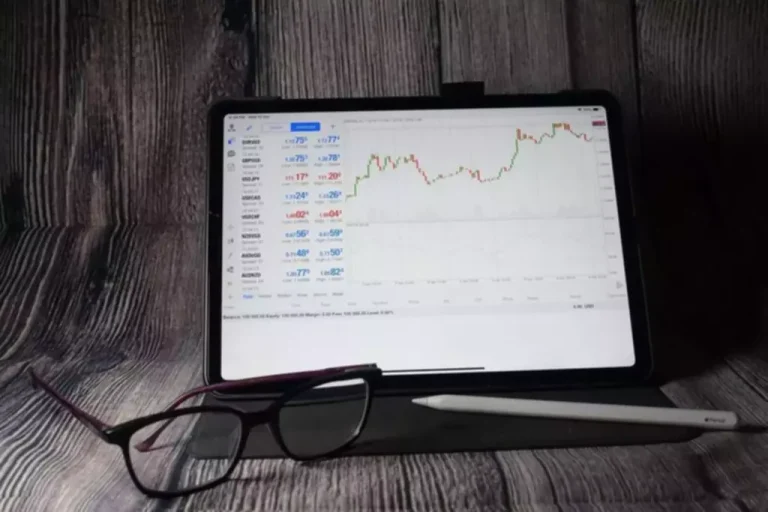Yield farming and liquidity mining, then again, are extra dangerous, as they contain shifting your digital belongings between completely different liquidity swimming pools or offering liquidity to those pools. Staking involves holding a cryptocurrency in a pockets to support the network’s security and validate transactions. Yield farming, however, is the process of incomes rewards by lending, borrowing, or providing liquidity to a DeFi platform. Liquidity mining, also known as yield mining, includes providing liquidity to a decentralized trade (DEX) and earning rewards for it. By holding your cryptocurrency property in a staking wallet or smart contract, you’ll find a way to take part within the network’s consensus mechanism and earn rewards within the form of new cryptocurrency tokens. These rewards are sometimes paid out on an everyday basis, relying on the network’s particular staking protocol.
It empowers decentralized finance (DeFi) ecosystems by enabling seamless token swaps and enhancing liquidity throughout various blockchain networks. With a strong infrastructure, Kyber Network Protocol allows customers to access digital belongings with minimal slippage and competitive rates. It boasts a decentralized architecture ensuring trustless transactions and a secure trading setting. However, slippage, the distinction between the expected and precise execution price, can influence trades on these decentralized exchanges.
Benefits And Advantages Of Liquidity Swimming Pools
This algorithmic adjustment ensures that the costs throughout the pool stay aggressive and near the market rate. Liquidity pool operations are governed by good contracts, self-executing agreements stored on the blockchain. Smart contracts automatically handle transactions throughout the pool, including deposits, withdrawals, and trades, based on the instructions they are programmed with.
What´s liquidity mining? – OKX
What´s liquidity mining?.
Posted: Thu, 15 Jun 2023 07:00:00 GMT [source]
It permits customers to commerce and supply liquidity for various tokens through good contracts. Sushiswap’s distinctive characteristic is its use of Automated Market Making (AMM), which allows users to earn fees by providing liquidity to token pairs. With its community-driven governance model, Sushiswap has gained recognition within the DeFi house, offering a user-friendly interface and incentivizing customers with yield farming opportunities. As a leading liquidity protocol, Sushiswap continues to innovate and contribute to the expansion of decentralized finance.
Security
Staking can be utilized to support various encryption and DeFi protocols in varied methods. A shift from Proof of Work (PoW) to a Proof of Stake (PoS) is in progress in the Ethereum 2.0 paradigm. Validators might need https://www.xcritical.com/ to stake parcels of 32ETH instead of giving hashing power to the network to verify transactions on the Ethereum network and get block rewards.
This elevated safety helps to forestall potential attacks or hacks on the community, making it a safer and more reliable investment choice. You can decide one of a quantity of reward tiers tied to totally different interest rates charged to traders who really make use of the digital funds you’re providing. Very frequent cryptocurrencies and stablecoins usually lean toward the decrease end of the pool charges; rare and unique coins typically carry greater charges.

That usually offers you an APR within the vary of 80% to 90%, although the precise worth varies over time. What really happens is that the group of liquidity miners will get to share the fees collected from merchants on the DEX, and the shared haul grows larger as trading volumes enhance. Therefore, a smaller fee can work out to a bigger payout if that particular tier happens to be incredibly active on the Uniswap buying and selling platform. Nansen is a blockchain analytics platform that enriches on-chain data with tens of millions of pockets labels.
Tranching And Synthetic Belongings
Liquidity pools are the backbone of DeFi (decentralized finance), allowing for decentralized finance trading, DeFi lending, and yield farming. At its core, liquidity mining is a course of that incentivizes users to provide liquidity to a decentralized exchange (DEX) by offering rewards within the form of tokens. In different words, liquidity mining is a way for customers to earn passive revenue by contributing to the liquidity pool of a DEX. At its core, yield farming is a technique of earning interest in your cryptocurrency holdings by lending them out or staking them in decentralized finance (DeFi) protocols. These protocols offer numerous incentives, similar to governance tokens, to incentivize customers to lock up their belongings and provide liquidity to the platform.

This eliminates the need for traditional market makers and permits for efficient trading even with comparatively low buying and selling volumes. Yield Farming is a more recent concept than staking, yet sharing plenty of similarities. While yield farming supplies liquidity to a DeFi protocol in exchange for yield, staking can refer to actions like locking up 32 ETH to turn into a validator node on the Ethereum 2.zero network. Farmers actively hunt down the maximum yield on their investments, switching between pools to boost their returns. In Tezos, users can delegate their staked coins to a delegate who will validate transactions on their behalf. Delegates are elected by the community, and those with the most staked cash have a better chance of being elected.
In this article, we dive into the world of liquidity swimming pools, exploring their significance and shedding mild on the main platforms that provide fund pooling companies. First, a smart contract is written, defining pool functionalities like token swapping and charges. Token pairs are then selected based on market demand, trading volume, and compatibility. In return for his or her contribution, liquidity providers are usually rewarded with transaction fees and different incentives, such as yield farming rewards or governance tokens. These incentives purpose to draw and retain liquidity suppliers, encouraging their continued participation in the liquidity provision process.
Liquidity
The tokens are distributed to LPs in proportion to their contribution to the liquidity pool. For instance, if an LP contributes 10% of the whole liquidity pool, they’ll obtain 10% of the rewards. As cryptocurrency continues to gain reputation, yield farming has emerged as a promising investment alternative within the decentralized finance (DeFi) house.
Of course, not all protocols offer such excessive returns, and the returns are topic to change because of market situations. However, the potential for top returns is undoubtedly a major draw for yield farmers. To get started with yield farming, an investor would first need to amass a cryptocurrency asset that’s appropriate with DeFi protocols, such liquidity mining as Ethereum or Binance Smart Chain. Once they’ve acquired the asset, they might then must deposit it right into a DeFi protocol, such as a liquidity pool. First, let’s think about the cryptocurrency Cardano (ADA), which uses a PoS consensus mechanism. In order to take part within the network as a validator, you have to stake a particular amount of ADA.
Liquidity suppliers deposit their tokens into the pool, and in return, they obtain commensurate liquidity pool tokens as their incentive for contributing to the pool. An AMM (automated market maker) is a kind of decentralized change protocol that uses a selected algorithm to cost tokens. Staking is relatively simple and straightforward, because it involves holding your digital belongings in a wallet. Yield farming and liquidity mining, however, are extra complex, as they involve shifting your digital property between different liquidity pools or providing liquidity to those pools. Liquidity mining also offers an opportunity for merchants to earn passive income without actively buying and selling. Once a dealer has offered liquidity to an change, they can earn rewards based mostly on the volume of trades on that change, without having to monitor market situations or execute trades actively.
Using Nansen To Identify Alternatives
Compound’s success has spurred the expansion of numerous yield farming platforms, offering customers with further income-generating alternatives. For instance, a yield farmer may provide liquidity to a lending platform by lending their cryptocurrency property to borrowers in trade for interest funds. Alternatively, they may use their liquidity pool tokens to take part in a liquidity mining program, where they can earn rewards for providing liquidity to a specific DeFi protocol.
These practices incentivize LPs to contribute funds to swimming pools by providing token rewards or a share of buying and selling charges. This has created new alternatives for customers to generate passive revenue and take part in the development of DeFi ecosystems. Convexity Protocol is a outstanding liquidity protocol, empowering decentralized finance fanatics with efficient capital deployment. Harnessing the power of convex monetary methods maximizes yields for liquidity providers. With its user-friendly interface and advanced automation, Convexity simplifies the method of incomes engaging returns on digital property.

The authors of this content and members of Nansen may be taking part or invested in a few of the protocols or tokens talked about herein. The foregoing assertion acts as a disclosure of potential conflicts of curiosity and is not a recommendation to purchase or spend cash on any token or take part in any protocol. Nansen doesn’t suggest any explicit plan of action in relation to any token or protocol. The content material herein is meant purely for academic and informational purposes solely and shouldn’t be relied upon as monetary, funding, legal, tax or any other skilled or different advice.
What Are Liquidity Pools And The Way Do They Work In Defi?
These fees are typically paid within the type of the cryptocurrency asset they are farming. Compared to different funding methods, staking requires significantly less vitality consumption. This is as a outcome of staking doesn’t require the use of highly effective computing gear like mining does.
 Firewall Training in India Cyber Security Training & Firewall Training Provider in India
Firewall Training in India Cyber Security Training & Firewall Training Provider in India











